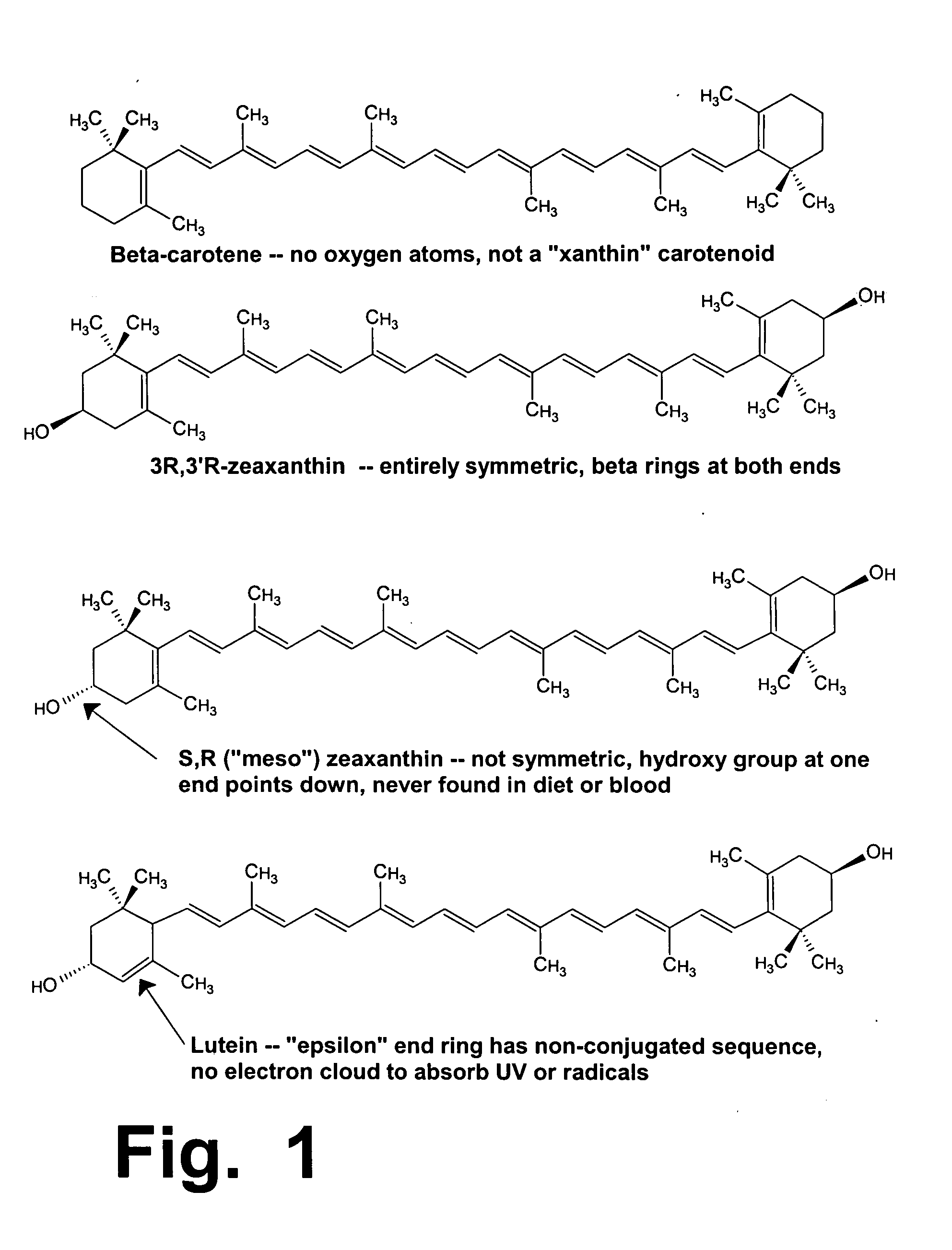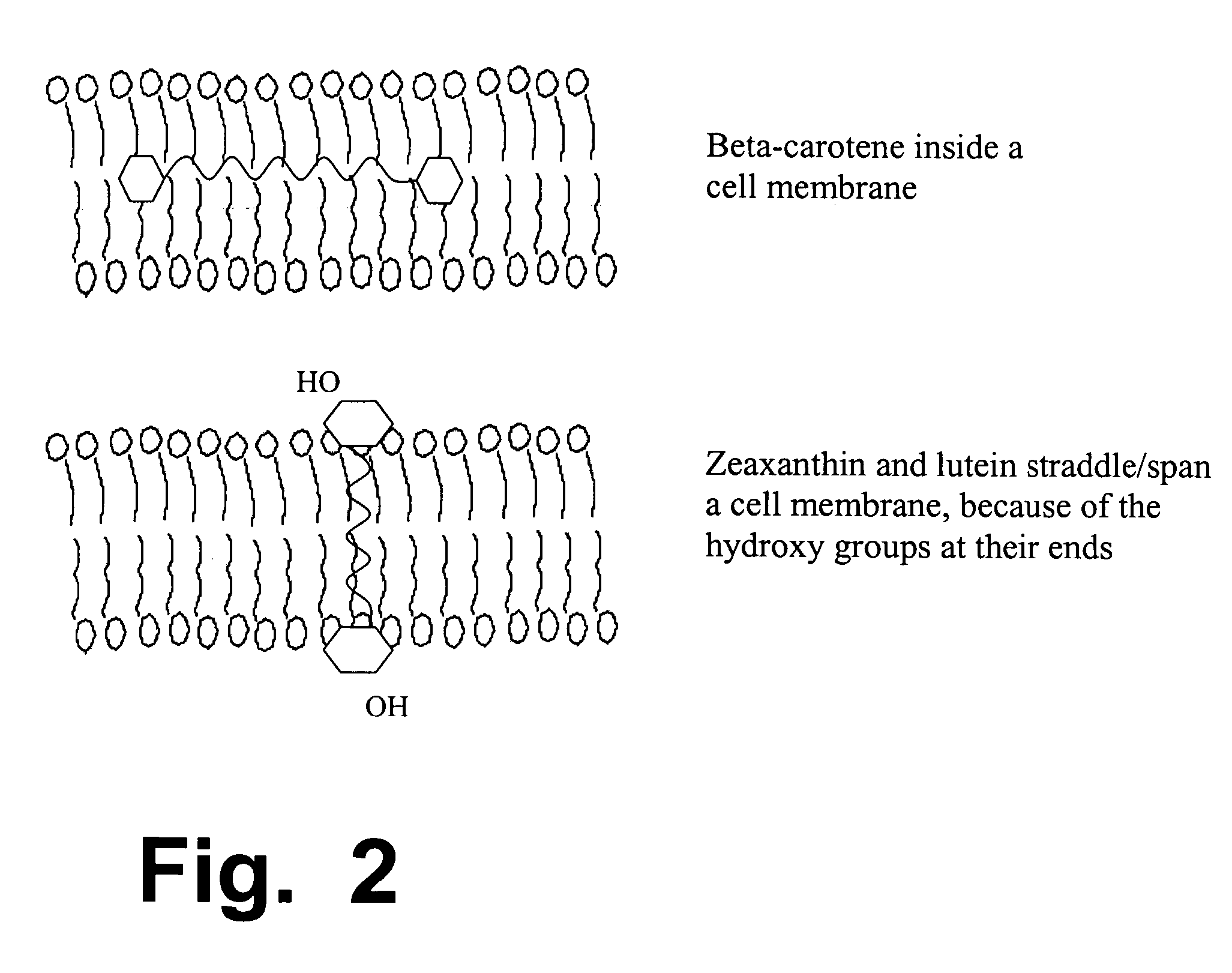Ocular formulations with neuroprotectants to reduce Alzheimer and neurotoxic risks created by large zinc dosages
a technology of neuroprotectants and formulations, applied in the field of oral administration, can solve the problems of increasing the risk of aggravated brain damage caused by zinc, and achieve the effect of reducing the risk of alzheimer's diseas
- Summary
- Abstract
- Description
- Claims
- Application Information
AI Technical Summary
Benefits of technology
Problems solved by technology
Method used
Image
Examples
Embodiment Construction
[0172] As summarized above, this invention discloses improved formulations for preventing or treating age-related eye diseases such as macular degeneration, containing anti-oxidants, zinc, and at least one neuroprotectant. Because age-related eye problems occur mainly in people older than about 60, neuroprotectant(s) and zinc dosages in these formulations must be balanced in a way that will provide good benefits for eye health, while minimizing the neurologic risks that arise when elderly people ingest abnormally large dosages of zinc.
[0173] To understand this invention, one must recognize the problem and dilemma that are addressed by this invention. On one hand, in a major clinical trial that studied thousands of people (the AREDS-1 trial, designed and carried out by the National Eye Institute over a span of nearly 10 years), zinc at high dosages was clearly shown and proved to be beneficial for eye and vision health, among elderly consumers who are beginning to suffer from macula...
PUM
| Property | Measurement | Unit |
|---|---|---|
| weight | aaaaa | aaaaa |
| weight | aaaaa | aaaaa |
| volume | aaaaa | aaaaa |
Abstract
Description
Claims
Application Information
 Login to View More
Login to View More - R&D
- Intellectual Property
- Life Sciences
- Materials
- Tech Scout
- Unparalleled Data Quality
- Higher Quality Content
- 60% Fewer Hallucinations
Browse by: Latest US Patents, China's latest patents, Technical Efficacy Thesaurus, Application Domain, Technology Topic, Popular Technical Reports.
© 2025 PatSnap. All rights reserved.Legal|Privacy policy|Modern Slavery Act Transparency Statement|Sitemap|About US| Contact US: help@patsnap.com


